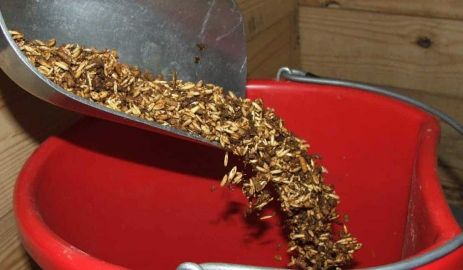
Feeding The Stabled Horse In The Winter
Although some horse owners choose to keep their horses turned out all year round, including during the winter, others choose to bring their horses in during the colder months. Whether this is to ensure that they don’t lose weight or to protect the paddocks from being poached, it is usually necessary to alter the horse feed as a result of being stabled. Therefore, we have put together some top tips for feeding the stabled horse to make it easier for you this winter.
Be Prepared
As with many things when it comes to horses, preparation is key to success. For example, if you know that your horse has a tendency to drop condition and weight over the winter, then you should act sooner rather than later as it’s much easier to maintain body weight rather than trying to put it on in the winter. This can be achieved by rugging up or stabling early as well as providing your horse with plenty of good quality forage.
Why Fibre Is Important
One of the biggest changes that is noticeable during autumn and winter is that grass growth is limited and in some cases, non-existent. Plus, any grazing that is available is likely to have a much lower nutritional value. An alternative such as hay or haylage is required to replace the grass to ensure the horse receives sufficient fibre to maintain normal, healthy gut function.
Fibre is also important to feed to your horse during the winter months, as the digestion of fibre in the horse’s hindgut generates heat. This essentially acts as an inbuilt radiator to make sure that your horse stays cosy from the inside.
Choose Horse Feed Wisely
There are many different types of horse feed available on the market and the right one for your horse is dependent on a number of factors. You should assess the horse’s work and whether or not they need to lose or gain weight and thus choose a feed that has an appropriate energy level. If you want to know what would be best to feed your horse, then you should speak to an equine nutritionist, who will take work, energy levels, turnout, age and ride into consideration. Remember that you may be faced with an excitable horse due to a lack of turnout, so you may want to switch to a lower-energy horse feed or one that provides slow-release energy.
Limited Interest
Stable horses can go off their horse feed as they prefer to be outside eating grass! Adding a succulent such as apples and carrots to their horse feed can help to tempt them. You can also add soaked sugar beet pulp to help promote interest again or try horse feeds with added herbs and flavours – research has shown that flavours as diverse as fenugreek and banana appeal to horses!
Hopefully, this short guide has given you some tips for feeding the stabled horse in the winter. Remember you can speak to an equine nutritionist if you would like to find out more information about what to feed your horse specifically.

